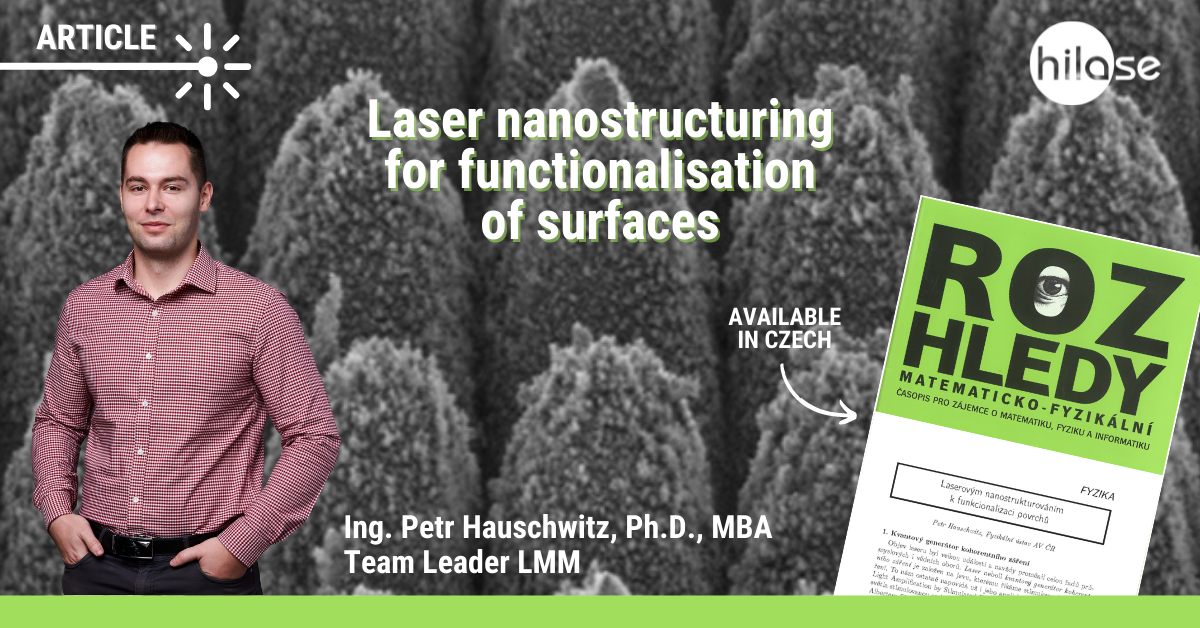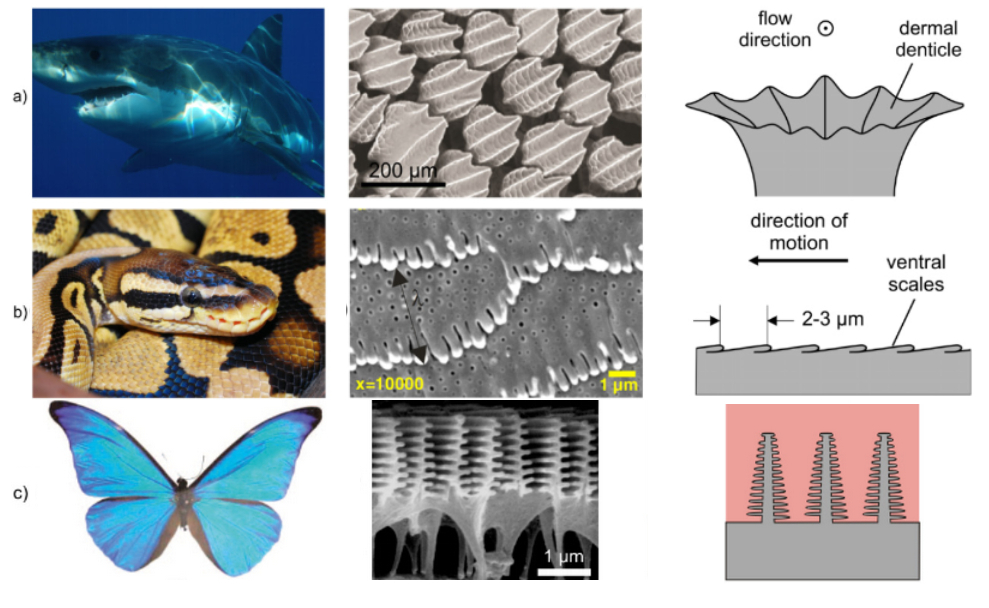An article by Peter Hauschwitz (LMM Team Leader) entitled Laser Nanostructuring for Functionalization of Surfaces was published in the 97th volume of the magazine ROZHLEDY matematicko-fyzikální.

Petr focuses on the functionalization of surfaces with ultrashort laser systems. With such a precise tool as the PERLA laser system, it is then possible to create special micro- and nanostructures on the surface of materials that can change the macroscopic properties of common materials. Thus, on the surface of materials such as glass, aluminium or stainless steel, it is possible to create a structure with the laser that changes the surface properties – e.g. the visual properties (matt/gloss surface), the biocompatibility of the surface or its antibacterial effects. However, there are a number of such functional surfaces with a wide range of applications in science and industry, be it aerospace (ice-phobic surfaces, air resistance reducing coatings, hydrophobic surfaces), automotive (self-cleaning surfaces, corrosion resistant surfaces, friction reduction), medical (antibacterial, biocompatible surfaces) and many others.
Outline:
- Quantum coherent radiation generator
- Laser as a precision instrument
- Functionalization of surfaces with ultrafast laser systems
- Real-world applications
The inspiration for the production of functional surfaces is very often nature. For example, the surface of a shark’s skin is covered with an antibacterial microstructure that reduces friction in the water, the legs of a gecko with an adhesive microstructure that allows the gecko to climb a vertical glass wall, or the skin of a snake with friction-reducing micro-features. Some butterfly species then have wings covered with special microstructures on which diffraction and interference occur. To us, they appear coloured, even though they contain no colour pigment.

ROZHLEDY matematicko-fyzikální is a magazine for talented primary and secondary school students, mathematics teachers and all those interested in mathematics, physics, computer science and the history of these disciplines. It provides articles aimed at extending and supplementing knowledge, interesting tasks, information about competitions and Olympiads. It is published four times a year by the Union of Czech Mathematicians and Physicists with the support of Faculty of Mathematics and Physics of the Charles University and the Faculty of Nuclear Sciences and Physical Engineering of the CTU.








